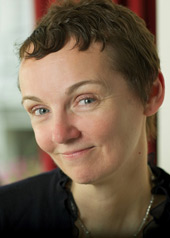Coming Together as a Diabetes Community
By Kelly Close
 In last issue’s learning curve, I wrote about our market research sister company dQ&A’s recent survey of 5,000 people about the social stigma that comes with living with diabetes. I also wanted to share how several respondents answered the question of how they wish their diabetes experience were different.
In last issue’s learning curve, I wrote about our market research sister company dQ&A’s recent survey of 5,000 people about the social stigma that comes with living with diabetes. I also wanted to share how several respondents answered the question of how they wish their diabetes experience were different.
-
“I wish that people knew how to help me when I’m hypoglycemic.”
-
“I wish that people knew we didn’t ask for this disease.”
-
“I wish that I did not have to hide when I take insulin outside the house.”
-
“I wish that my family would not try to monitor my food and exercise.”
-
“I wish that people did not equate diabetes with being fat or lazy.”
-
“I wish people knew how much it costs to buy strips, meters, lancets, medications, [and] quality food choices.”
-
“I wish that a cure could be found.”
Many of these wishes might be familiar to you. And what may well be surprising to our readers with type 1 is just who wrote these responses. Every single one of the quotes you just read is from a person with type 2 diabetes. The same concerns that many of us with type 1 experience – the fear of hypoglycemia, the pressure of dealing with the sheer cost of managing diabetes, the dream of a cure – are also all too common among people with type 2. Type 1 and type 2 are very different diseases, but even then, we’re all talking about conditions that involve problems with glucose and insulin production. We’re talking about conditions that are shaped by tricky combinations of genetics, lifestyle, and environment. We’re talking about conditions that require consistent glucose monitoring and carry the short-term risk of hypoglycemia and the long-term fear of complications.
Whatever we might gain by drawing a clear boundary between type 1 and type 2 is unequaled by what we could achieve by focusing on our commonalities. I’m pleased to say that much of the diabetes community has begun to recognize that in a significant way. For instance, the Children with Diabetes Friends for Life conference – historically a group run by and focused on people with type 1 – has plans next year to invite patients with type 2 diabetes to participate in a type 2 track. While some may think this highlights differences, it’s a big deal that both type 1 and type 2 patients will come together at this meeting.
This isn’t just a social movement, either. We’re seeing lots of drug classes designed for people with type 2 being tested for type 1 patients, including GLP-1 agonists and SGLT-2 inhibitors. These potential add-on therapies could make a big difference for people with type 1 who are struggling to control their glucose with insulin alone – I’ve written before about my experiences using Victoza off-label and I’ve been trying a SGLT-2 off-label of late – these novel drugs are only available to us because type 2 diabetes is such a massive driver of new research.
In my last letter, I discussed why it’s so crucial that we have better organized, and more focused diabetes advocacy. Perhaps even more than that, we need unity. We’ve gained so much in the past few years from the push to think of diabetes in individualized terms, and to make sure that we recognize the ways in which each person’s diabetes presents its own unique challenges. While we don’t want to abandon that line of thinking, we want to be aware that everybody with diabetes, regardless of type, is on the same journey. If you have type 2, read about the experiences of those with type 1. If you have type 1, do the same for those with type 2. You might be surprised (and inspired!) by the experiences of others. To that end, I want to leave you with one last quote from a survey participant, who wrote eloquently about how we should all try to move ahead: “Quit faulting people with type 2 for getting diabetes. While we know that there is a correlation between being overweight and getting type 2, it’s not cut and dried. I think if we remove the stigma associated with type 2, we can erase the stigma associated with type 1.”
The woman who wrote those words uses an insulin pump. She has type 1, not type 2. And, for my money, she’s absolutely right. Thank you for pushing us to move on.
very best,

Kelly L. Close
Never miss an update by signing up here to receive free updates on future diaTribe articles.







